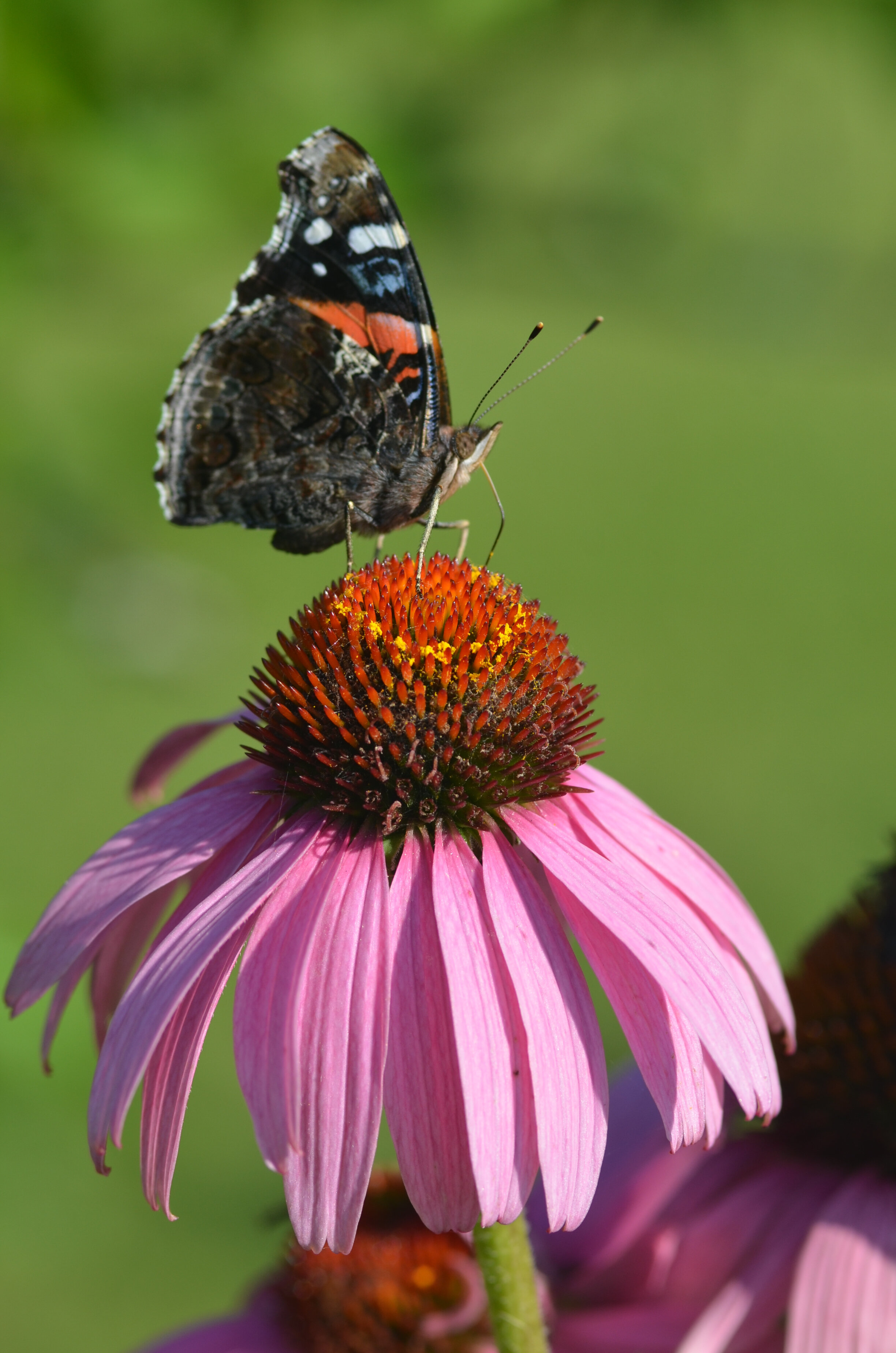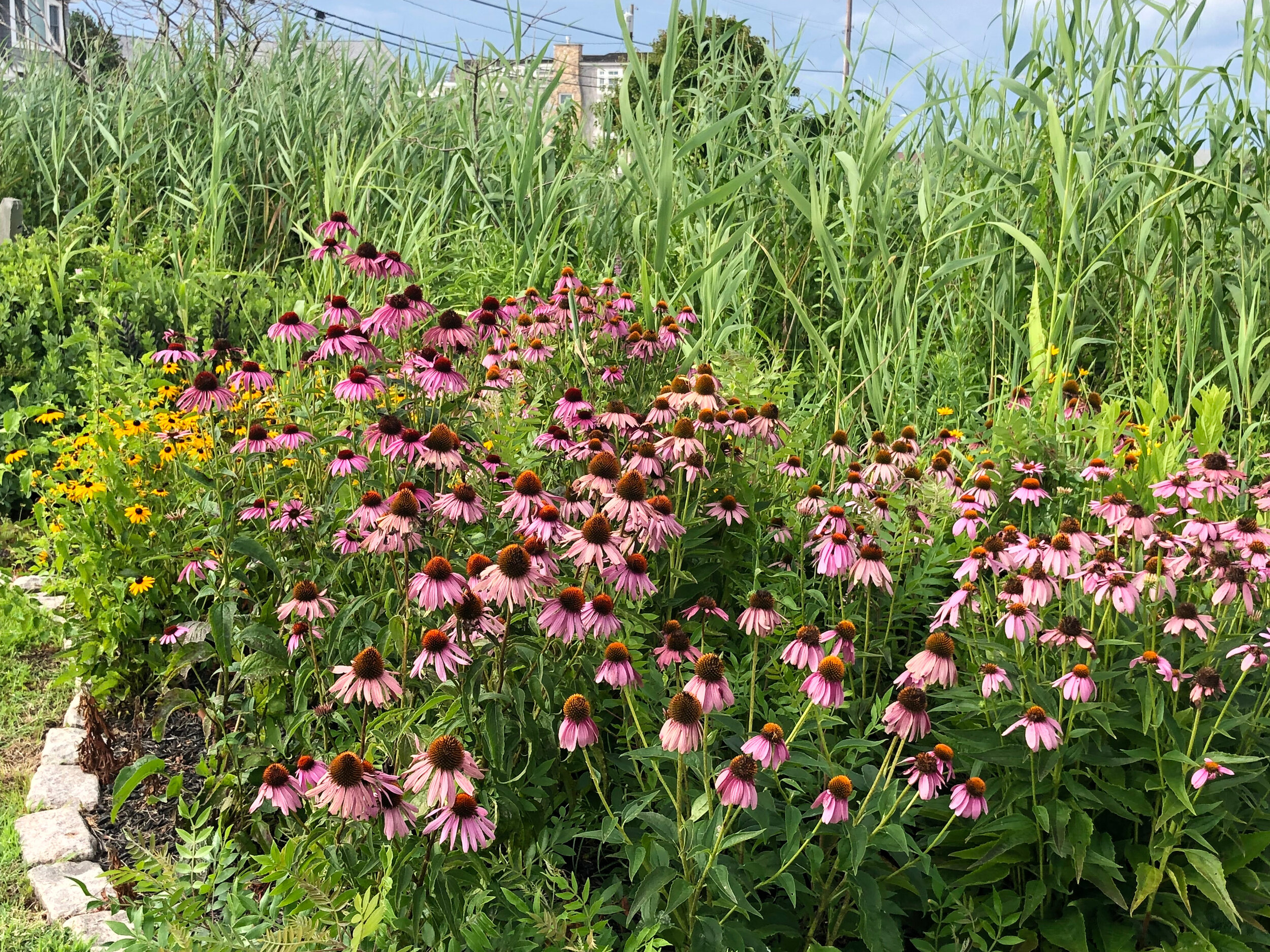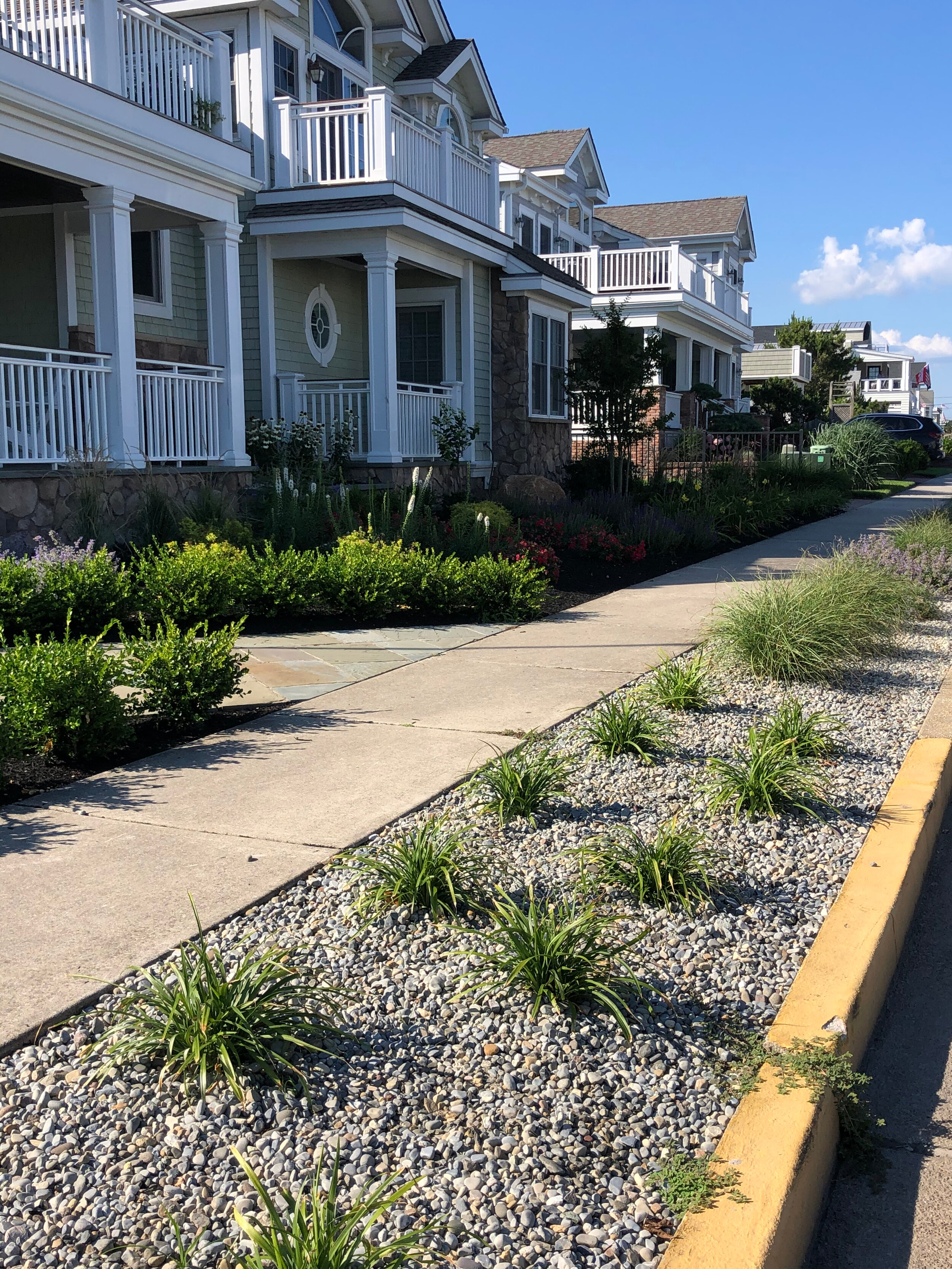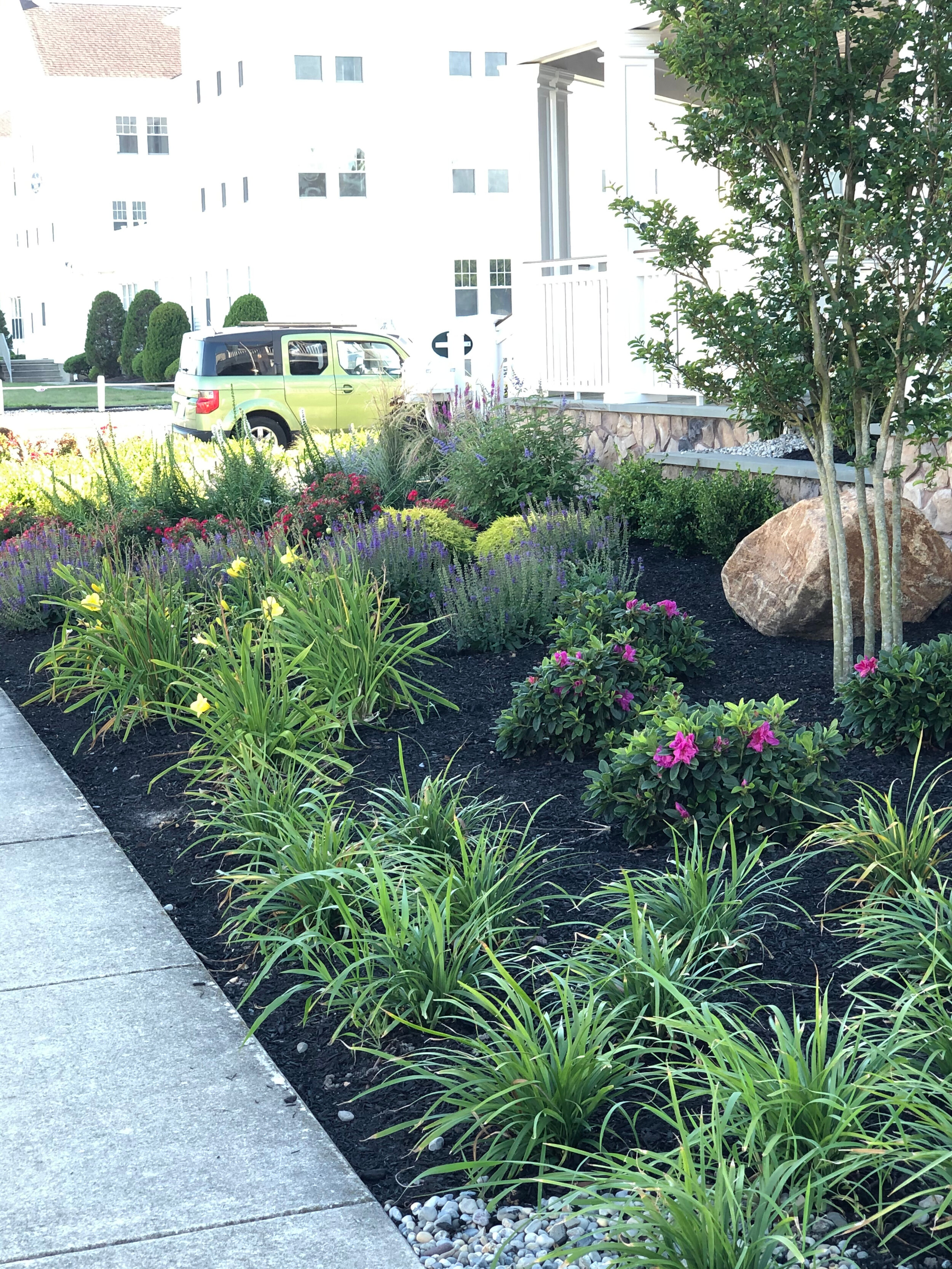Toward a Sustainable Future: We All Have a Roll
Monarchs on native Seaside Goldenrod
Sustainability focuses on meeting the needs of the present without compromising the ability of future generations to meet their needs. Environmental sustainability is one of the three pillars of sustainability along with economic and social sustainability. Seven Mile Beach faces significant challenges in the quest for sustainability that can balance community values with the realities of the 21st century.
Island communities by their very nature have limited resources and in a rapidly changing world, the stresses on natural resources and island infrastructure are becoming ever more apparent and acute. Seven Mile Beach is really nothing more than a sandy ridge that was built up above the ocean over the past 10,000 years or less. It is extremely susceptible to the whims of the sea and storms. The very things that we all love about Seven Mile Beach and our island communities, place significant limits on the ability of these communities to remain sustainable into the future.
The boroughs of Avalon and Stone Harbor have taken several steps that help move toward sustainability by adopting and promoting practices that strengthen the island communities and lessen the stresses that the island way of life has on our natural resources and built environment. There is a lot more to do and it’s important that our residents and property owners become literate in sustainability issues and their role in contributing to the achievement of sustainability. It is my hope that these “beach-read articles” can help with this education and also provide concrete steps that you can take to become part of the solution. In this article, I will focus on water management at the individual-lot level and suggest approaches that can also benefit wildlife.
One significant problem for the sustainability of Seven Mile Beach is managing flooding and protecting the fresh-
water supply. The fresh-water supply on barrier islands is especially vulnerable to rising seas. Low-lying island streets flood with saltwater dozens of times each year even on sunny days; the result of rising seas. Storm intensity and frequency has measurably increased, bringing saltwater flooding as well as flooding by rainwater. Rainfall in New Jersey has increased 4-6 inches since the 1950s and this rainfall comes in intense downpours more frequently. The Northeast has seen an increase of more than 55% in intense rainfall events. Heavy rainfall events contribute to street flooding. These flooding events impact the economic sustainability of the island as well as its livability, and the solutions are very expensive and difficult. Thankfully, there are many steps that individual property owners can take that can contribute to the management of rain-induced floodwaters.
Consider the fate of a drop of rain on a typical island lot. Rain falling on permeable surfaces – surfaces that can absorb water – allow the water to soak into the ground. Fresh water soaking into the ground is the best place for rainfall to go. This ground-soaking water builds an underground lens that keeps saltwater from invading and recharges the fresh water that is under our feet. It is used by trees and landscaping, reducing the need for irrigation. Impermeable surfaces, in contrast, cause water to run off properties into streets and ultimately to the storm drain network for discharge to the ocean. Most island properties are dominated by impermeable surfaces that include roofs, decking, driveways, and even turf grass. As the proportion of a building lot gets converted to a higher percentage of impermeable surface, runoff increases dramatically. A building lot that has natural land cover will absorb or evaporate back to the atmosphere all but 10% of the rain falling on it. A fully built-out lot dominated by impervious cover can have more than 55% of rainfall running off the lot. Stormwater pipe networks are overwhelmed, streets flood and the precious fresh water is diverted from recharging the ground to discharge points in the bay. During high tides and storm tides that can accompany intense rainfall events, elevated water levels in the bay prevent the gravity feed of the storm drain network from functioning, further exacerbating the flooding problems.
Both Avalon and Stone Harbor have begun to rebuild and enlarge stormwater infrastructure and construct extremely expensive pump stations to address flooding issues. These flooding issues are projected to continue to intensify under all sea level rise scenarios and projections of continuing climate changes. The reality is these fixes can only do so much and there are numerous things that property owners can do to help reduce the runoff coming from their properties. Some measures will undoubtedly need to come through building and lot ordinances, but so much can be achieved voluntarily. It will take a thousand solutions to move the Seven Mile communities toward sustainability. Everyone needs to pitch in to get there.







Evaluating properties for ways to increase impermeable surfaces is a great way to start. Consider porous paving stones for walkways and driveways. They are made of material that allows water to soak into them rather than running off them. Consider diverting gutters into landscaped areas that are designed to absorb water. These can be underground areas that have been specially prepared to drain water quickly or they can be landscaped surface depressions. These so-called rain gardens can significantly reduce runoff from a property. Rain garden plants are colorful and make pleasing landscape features. Reducing or eliminating turf grass is another important step. Turf grass has very shallow roots, requires a lot of water, and is a very poor surface for water infiltration. Replacing turf grass with gardens or even stones will increase the amount of water that can soak into the ground instead of running off.
In addition to contributing to island flooding problems, the built environment has contributed to dramatic losses of habitat. Aligning your garden and landscaping to be more natural provides many benefits to you, the island’s wildlife, and the sustainability of our island. Our heavily developed island leaves little room for nature, but this doesn’t need to be the case. Selecting landscaping options that utilize native plants provides a host of additional benefits. Native plants are low water users once they are established. They are adapted to the climate here and thrive without watering. They typically have extensive root systems that help increase the amount of water that soaks into the ground. This is water the plants use to prosper without additional watering while providing the added benefit of helping to reduce runoff that contributes to flooding.
Native plants and native pollinators are inextricably linked and pollinators (think bees, butterflies and hummingbirds) are as vital to native plants as the plants are vital to them. A rich and beautiful garden is a place full of life. If you are interested in learning about native plants and gardening for wildlife, there are some great places to visit and learn. The Wetlands Institute has created native plant gardens that are specifically designed to support wildlife including butterflies, songbirds and other pollinators and reduce water usage. These gardens are at The Wetlands Institute and at the Stone Harbor Bird Sanctuary, built in partnership with the Borough of Stone Harbor. The Stone Harbor POA has constructed native plant gardens around the 95th Street Water Tower. They also partnered with the Borough to build a rain garden to manage parking-lot runoff there. The Borough of Avalon built a pollinator garden using native plants on the north side of Armacost Park and has adopted the use of native plants and other water-saving measures in Surfside Park, and new plantings around Bayside Park.
These gardens have all been carefully designed to provide an array of services for the resident and migratory wildlife that use them. The overarching plan has been to restore the gardens using only native plants that, once established, will require little to no watering. The plant selections and garden compositions place an emphasis on providing critical needs to songbirds, hummingbirds, butterflies and other pollinators, while being colorful and interesting.
Knowing the best plants for native gardens, as well as plants to be avoided, is an important first step. Make sure to ask your landscaper what they intend to plant in your gardens and avoid known problem plants that are high water users and that don’t provide any benefits to wildlife. The ubiquitous hydrangea is one such plant. Unfortunately, many of the popular plants in island landscaping are poor choices for sustainable gardens. There are lots of resources you can use. One resource is the Stone Harbor Bird Sanctuary website
(stoneharborbirdsanctuary.org) that provides maps of the gardens and a listing of native plants that can be found there. The New Jersey Invasive Species Strike Team (njisst.org) has lists of plants that should not be planted, and the Native Plant Society of New Jersey (npsnj.org) has information on native plants for our area. The gardens at The Wetlands Institute and the institute website are also a great resource.
Property landscaping plays an important role in the natural value of Seven Mile Beach, and the choices that each landowner makes collectively has a dramatic impact. Every homeowner can join in the effort to help make our island more sustainable.


